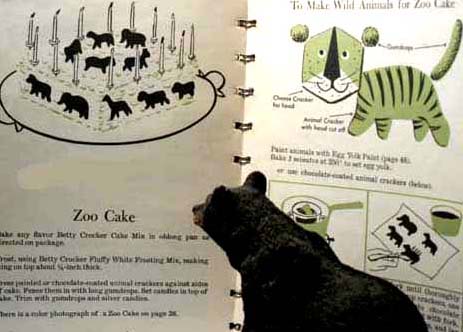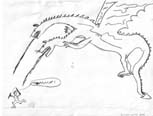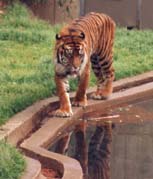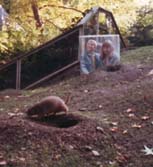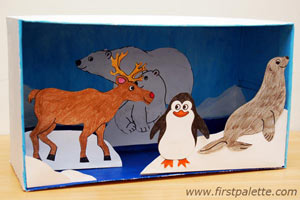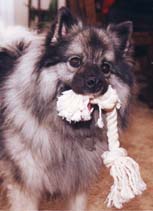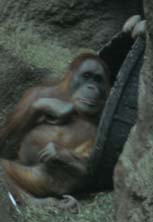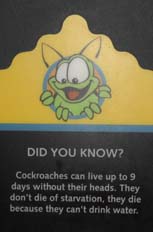Student Activities
Spark interest and enrich your students' learning experiences by reading aloud from National
Geographic Kids. Start by projecting one of my stories, from the "Clips & Awards"
page, up on
the Smart Board. Read and discuss. Then further engage your class with one or more of the activities below:
Make an Animal Cookbook
Display several cookbooks written for kids. Discuss the kinds of information given. Pass out the reproducible Zoo Foods worksheet and tell students to use it to create a funny recipe for a zoo animal of their choice. Students must include at least three ingredients that their animal really eats (such as durian fruits - which orangutans love, peanuts, or mice), and three silly ingredients like "toe of frog" or dirty sneakers. Encourage them to give their recipes crazy names, like Porcupine Pizza, Meerkat Meatballs, or Sea Lion Stew. Compile the recipes into a goofy book.
Wild Thing
Ask the students to close their eyes and imagine the craziest creature they can dream up. Maybe it has only one leg, hops over tall buildings, and smells like bubble gum. Students are to write a description of this animal giving as much detail as possible. What does it look like? Where does it live? What sounds does it make? What foods does it eat? Is it fierce or friendly? -OR- Have them write make-believe stories about their pretend animals.
Take a Field Trip
Visiting a zoo or aquarium will help students develop their powers of observation. Define observation as carefully watching something. Discuss the importance of sitting quietly for an extended period of time and paying close attention to detail. Duplicate and distribute "Animal Sightings" worksheets for students to use when recording their observations.
If I Was a Lion...
I'd roar and I'd roar. What would your students do if they turned into tigers or prairie dogs? Ask them to imagine what it would be like to trade places with their favorite animal for a day. Where would they sleep? What dangers would they face? What would they do for fun? Have them research their favorite critters and then write stories about a day in their life.
Build Dioramas
Have students pretend to be landscape architects. Let them choose an animal. It is their job to research the animal's needs and design a naturalistic enclosure (habitat) for it. They can model their designs by creating shoebox dioramas using such items as a hand-colored background mural, inexpensive miniature toy animals, pipe cleaners, pebbles, twigs, coffee (for dirt), branches (for logs), play dough, construction paper, aluminum foil (to represent water), shells, etc.
Animal Tales
Many of my NGKids articles are made up of anecdotes. Define anecdote as a mini-story about a true event. Using my anecdotes as examples, tell the students to write a touching, funny, or surprising story about a real-life pet they have known. Make sure they include a title. They can illustrate their stories with drawings, photos, or magazine cut-outs.
Zoo TV
Pretend that "Zoo Talk" is a new show on Animal Planet. Assign students to work in pairs. One is the host of the show, and the other is the guest--a dedicated zookeeper. Working together, they create a list of interview questions that require long answers, not a simple "yes" or "no." They also research and compose accurate answers to the questions. For example, "Which is your favorite zoo exhibit and why?" Answer: "The orangutans, because they're so much fun to watch. We give them containers to play with, and sometimes they fill them. Sometimes they sit in them, and sometimes they wear them like hats.
When ready, students can role-play their interviews for the class.
If You Ran the Zoo
Read aloud the Dr. Seuss classic, IF I RAN THE ZOO. In this funny story, young Gerald McGrew takes charge of the zoo. He unlocks the cages and releases all the animals. Then he replaces them with crazy critters from his own imagination. Tell your students to imagine they're in charge of the zoo. Have them write either a serious or a silly story about the changes they would make.
Wacky Facts
Assemble a variety of resources for the students to use, including books, magazines, and computers with Internet connections. Tell them to look for five surprising animal facts and to list those they find. For example, "No two zebras have exactly the same pattern of stripes." Using colored markers, students write their favorite facts on cardboard strips, which you post around the room.
